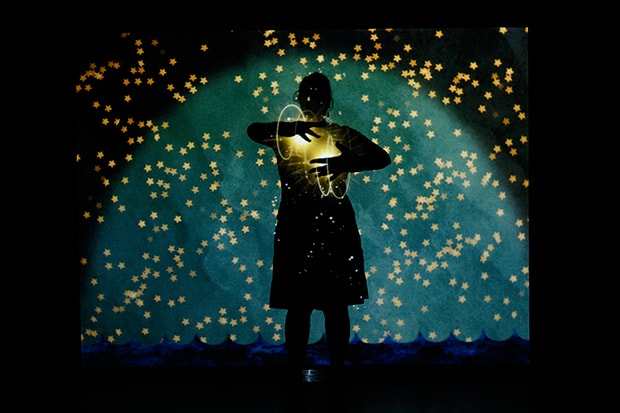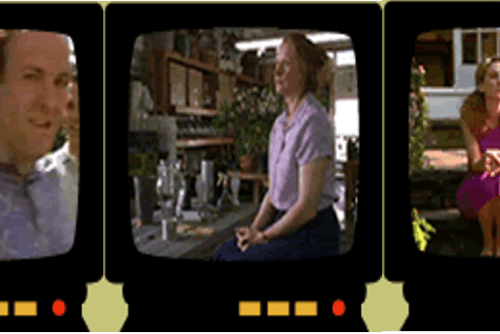II. www.café.daum.net/adopteesmam
In the first year of the The Sad Love Stories of Mothers Who Sent Their Babies Away for Adoption site, an estimated 100 birthmothers signed up as members and actively participated on the message boards. More than ten messages were posted daily, and the conversation developed into a variety of on- and off-line activities, such as regular chats and community meetings. The membership incrementally increased over time, reaching 570 by November 2005.1 This Web site consists of various sections: Introduction; Counseling; Let’s Talk; Unsent Letters; Stories at Your Heart; Your Thoughts About Adoption; Adoption Is a Pleasure; and A Picture Display Room. For the purposes of this analysis, I focus primarily on posts found in the following areas: Counseling, which provides an opportunity for women to discuss issues related to their pregnancy and their reasons for deciding upon adoption; Stories at Your Heart, a place to tell untold stories; Unsent Letters, where women can write to their babies; and Let’s Talk, which allows members to communicate with one another.
The Web site’s appeal to these women is not surprising. Sharing their experience helps to release the sense of loneliness, abandonment, and social ostracization that many of the birthmothers feel. The following post captures a birthmother’s response after she discovered and joined in this listserv.
ID: 슬픈맘으로 (With Sad Heart)
Date: 2004.06.26 22:24
Subject: I feel like I have a secret friend here
It has taken me a while to introduce myself . . . I got pregnant, went through pregnancy, gave birth and put my baby up for adoption all alone. All the way through I did not have anyone to turn to and get counseling. Since I started to write here, I have felt much better . . . I feel like I have found a friendship.
Ann Anagnost argues that the “InterNet listserv embodies new forms of sociality and community as technologies of the intimate public sphere,” an observation that applies well to “The Sad Love Stories” Web site.2 Grappling with losses that often cannot (or are not allowed to) be articulated, the young women not only find a venue to express their feelings and their wishes for their babies, but also build a sense of belonging within the same social framework that made them feel excluded.
It is here that a sense of “virtual mothering” emerges, a performance by the birthmothers of adopted children that invites us to consider how traumatized bodies interact with Internet technology, thereby creating a new notion of body and subjectivity. For these women, the bodily experience of motherhood is often a distressing one. First, most contributors to “Sad Love Stories” suffer emotional and/or physical pain around their conception and pregnancy: The majority are young, unmarried women whose relationship with the father of their children has ended before (and many times because of) the child’s imminent arrival. Even more traumatic, a few women suggested that their pregnancy was a result of sexual assaults by boyfriends, male friends, or strangers.3
Second, mothering is an embodied practice, both physically and emotionally, from the spiked hormonal activity of pregnancy, to the bodily trauma of labor, to the complex corporeal interactions—breastfeeding, caressing, diaper changing, playing—by which a mother and child bond. As a result, mothering creates a physical and social relationship with a child.4
The “Sad Love Stories” community, however, is a site where organic maternal bodies do not respond to their children, but instead interface with machines, configuring birthmothers who are, in Gilles Deleuze’s terminology, part of “machinic assemblages.” Johnston explains that “the assemblage is not opposed to either mechanical machines or organic bodies but encompasses both. Where bodies and machines enter into machinic relationships, that is, become parts of an assemblage.”5 In machinic assemblages, perceptions are freed from human bodies and distributed across “a heterogeneous assembly of brains, bodies, artifacts, and other external structures.”6 The birthmother, then, un/consciously performs her mothering through an interface with Internet technology.
In order to conceive bodies on the Internet, bodies that transcend the human-centered notion of the body, I draw upon Brian Massumi’s formulation of bodily affect. According to Massumi, the two important aspects of the body are that it moves and feels. Affect is incipient, never fully realized, and therefore always potentially “embodied in purely automatic reactions most directly manifested in the skin—at the surface of the body, at its interface with things.”7 His notion of affect treats the body not in terms of a predetermined subjectivity, but rather as an emergent, future-oriented quality of incipience. Massumi’s affect and body help to explain movements with no end and the circulation of performing bodies on the Internet. Drawing upon John Johnston and Massumi, I contend that the ways in which a “Sad Love Stories” woman becomes a “mother”—as opposed to merely a birthmother—is a collective process of bodies and machines, a machinic assemblage that has affective qualities.8 Affects, of course, include emotions and trauma and its bodily residues, but also unrealized, unactivated, incipient energy emerging from the porous skin and distributed into discrete bodies, matters, and artifacts across different times and places. As Argyle and Shields eloquently put it, “memory traces, called up by the body, parts of the body themselves, allow us to experience with our physical selves . . . [in the meantime, we] deposit our physical bits along the pathways of the BBS.”9
The memory and mourning of birthmothers, their virtual mothering, is always staged in the “here and now” of Internet temporality, where we “bear witness in a live process so that a listener become(s) ‘a participant and a co-owner of the traumatic event.'”10 The Internet community, the site of that “shared and participatory act of telling and listening,” therefore functions as a venue for “the transmission of traumatic memory.”11
- Yet, this number does not indicate the actual number of birthmothers who actively visit the site. About half of the registered members were one-time visitors. Excluding them, the site had about 300 people, ranging in age from 11 to 55 at the end of November 2005. Based on voluntary self-identification claims, this listserv currently has about 100 birthmothers, 3 birthfathers, 70 (prospective) adoptive parents, and 13 adoptees; the rest (117) are categorized as others. [↩]
- Ann Anagnost, “Maternal Labor in a Transnational Circuit,” in Consuming Motherhood, ed. Janelle S. Taylor, Linda L. Layne, and Danielle F. Wozniak (New Brunswick: Rutgers University Press, 2004), 145. [↩]
- ID: ILMARE; ID: 닉네임. [↩]
- Barbara K. Rothman, Recreating Motherhood: Ideology and Technology in a Patriarchal Society (New York: Norton, 1989). [↩]
- John Johnston, “Machinic Assemblage,” Critical Inquiry 26, no. 3 (1999): 27-48, 28. [↩]
- Ibid., 43. [↩]
- Brian Massumi, Parables for the Virtual (Durham: Duke University Press, 2002), 25. [↩]
- John Johnston, “Machinic Assemblage”; Brian Massumi, Parables for the Virtual (Durham: Duke University Press, 2002). [↩]
- K. Argyle and Rob Shields, “Is there a body in the Net?” in Cultures of InterNet: Virtual Spaces, Real Histories, Living Bodies, ed. Rob Shields (Thousand Oaks: Sage Publications, 1996), 69. [↩]
- Dori Laub, “Bearing Witness or the Vicissitudes of Listening,” in Testimony: Crisis of Witnessing in Literature, Psychoanalysis, and History, ed. Shoshana Felman and Dori Laub (New York and London: Routledge, 1992), 57. [↩]
- Diana Taylor, The Archive and the Repertoire, (Durham: Duke University Press, 2003), 167. [↩]




